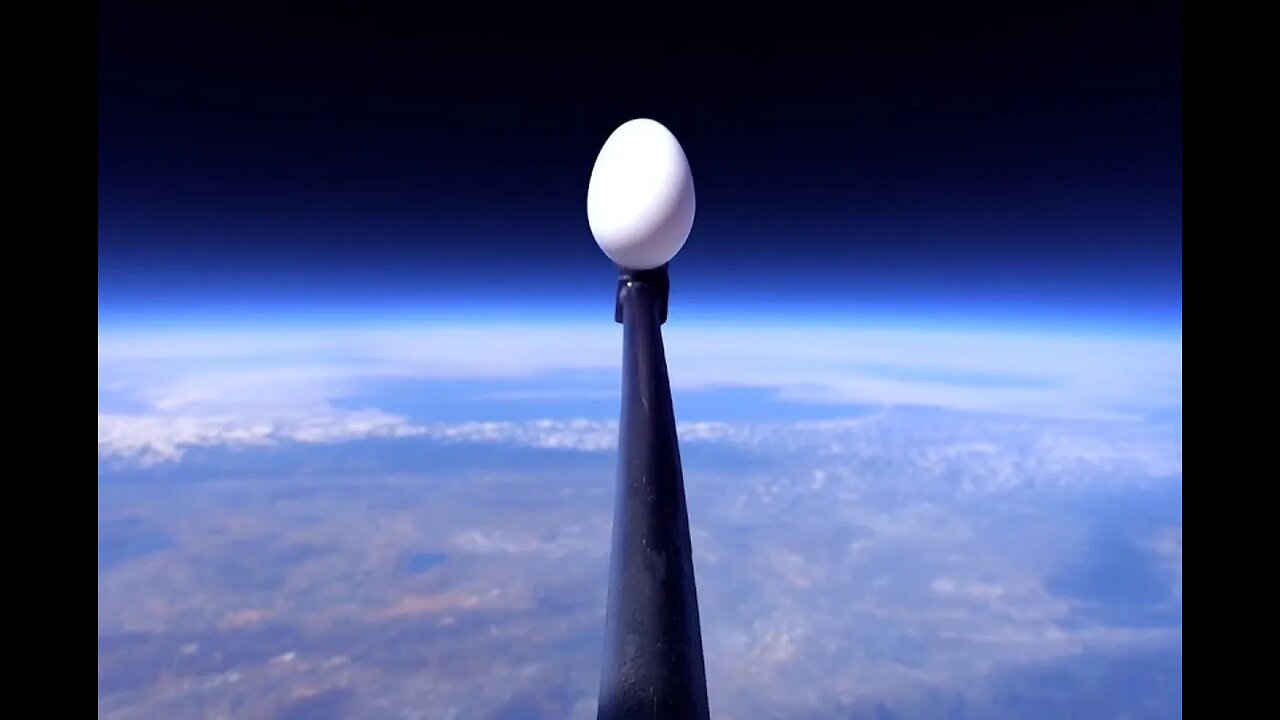Premium Only Content

Egg Drop From Space
The "Egg Drop From Space" experiment involves launching an egg into the upper atmosphere using a high-altitude balloon or other similar devices. The primary goal of this experiment is to test the effects of near-space conditions, such as low pressure and extreme cold, on the egg's structural integrity and whether it can survive the fall back to Earth.
The experiment typically consists of the following steps:
Preparation: Engineers and students design a protective capsule or container for the egg. The capsule is equipped with cushioning materials, shock absorbers, and insulation to shield the egg from the harsh conditions of space and its descent back to the Earth's surface.
Payload Integration: The egg, safely housed within the protective capsule, is attached to the high-altitude balloon along with necessary tracking equipment, cameras, and sensors. These devices help capture data and imagery during the journey.
Launch: The balloon is released into the atmosphere, carrying the egg and its protective capsule. As the balloon ascends, it passes through different layers of the atmosphere, experiencing changing conditions such as temperature, pressure, and air density.
Near-Space Conditions: The balloon reaches near-space altitudes, often referred to as the stratosphere. In this region, the atmospheric pressure is significantly lower, and temperatures can drop to extremely cold levels. The experiment aims to observe how the protective capsule and its contents fare under these conditions.
Descent: Eventually, the balloon reaches its maximum altitude, and it bursts due to the lower pressure at high altitudes. The protective capsule, along with the egg, begins its descent back to Earth.
Recovery: Parachutes or other mechanisms are usually deployed to slow down the descent of the capsule. Ground teams track the capsule's location using GPS and radio communication. Once the capsule lands, the experimenters retrieve it and examine the egg to see if it has survived the journey intact.
Data Analysis: The data collected from sensors and cameras during the flight are analyzed to understand the conditions the egg and the capsule experienced throughout the journey. This analysis helps researchers and students learn more about the effects of space-like conditions on materials and structures.
-
 LIVE
LIVE
Dear America
1 hour agoTrans Violence Against Christianity MUST BE STOPPED!!
3,415 watching -
 LIVE
LIVE
Total Horse Channel
13 hours ago2025 URCHA Futurity | Derby & Horse Show | Thursday
54 watching -
 LIVE
LIVE
Wendy Bell Radio
5 hours agoGuns Don't Kill People
7,200 watching -
 LIVE
LIVE
Matt Kohrs
9 hours agoMarket Open: New Highs or Bust?! || Live Trading Futures & Options
673 watching -
 LIVE
LIVE
Randi Hipper
38 minutes agoWALL STREET'S CRYPTO BET REVEALED! HINT: IT'S NOT BITCOIN!
36 watching -
 LIVE
LIVE
The Mike Schwartz Show
1 hour agoTHE MIKE SCHWARTZ SHOW with DR. MICHAEL J SCHWARTZ 08-28-2025
2,430 watching -
 LIVE
LIVE
LFA TV
3 hours agoLFA TV ALL DAY STREAM - THURSDAY 8/28/25
5,416 watching -
 2:04:35
2:04:35
Game On!
19 hours ago $2.59 earnedCollege Football Is BACK! Week 1 Preview!
27.7K2 -
 4:00:18
4:00:18
The Bubba Army
1 day agoMinneapolis Shooter Story Unfolds! - Bubba the Love Sponge® Show | 8/28/25
58.2K9 -
 LIVE
LIVE
JuicyJohns
2 hours ago $0.11 earned🟢#1 REBIRTH PLAYER 10.2+ KD🟢
29 watching